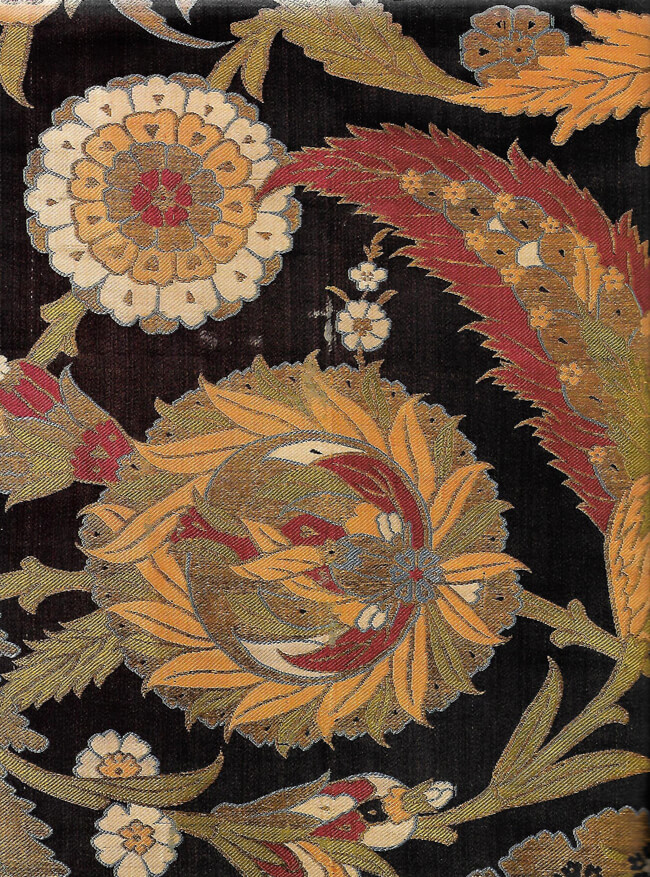-

 Know, the true nature of your Beloved.
Know, the true nature of your Beloved.
In His loving eyes, your every thought,
Word and movement is always –
Always Beautiful.
~ Hafiz
Islamic Arts

Silk Fabrics
Silk manufacture was introduced to Spain by Muslims in the 10th century, with Spain becoming a major silk textiles producer during the Almoravid and Almohad rules. There were over 3,000 looms for the production of silk garments, precious brocades and textiles in the town of Almeria alone. Designs feature rows of octagons, bands of Kufic script and human and animal figures, including peacocks, lions and bears.
A number of lattice designs formed from a repeating almond shaped motif, derived from a stylized chinoiserie lotus, are among the surviving silks from the Mamluk period. This ‘ogival lattice’ later became very popular during the Ottoman period.
The silks made in Safavid Iran and Azerbaijan display a degree of naturalism in their designs, drawing parallels to Safavid miniature painting. In some cases, miniature painters actually designed the patterns for the silk weavers.
Silk brocades and velvets were highly prizes by the Ottomans, with floral designs predominating, similar to those found on Iznik pottery. Other areas of production included Algeria and the exceptionally beautiful batik designs from Java. The ’suzanis’ of 19th century Uzbekistan are large silk embroidered wall hangings, bedspeads and other furnishings, that usually formed part of a wedding dowry.
Source:- “The Timeline History of Islamic Art and Architecture” by Nasser D. Khalili.
Photo above:- ‘Kemha’ (brocaded silk) detail of a Kaftan in ‘saz’ style. Ottoman Turkey, c.1550 CE. Source:- Republic of Turkey Ministry of Culture.
